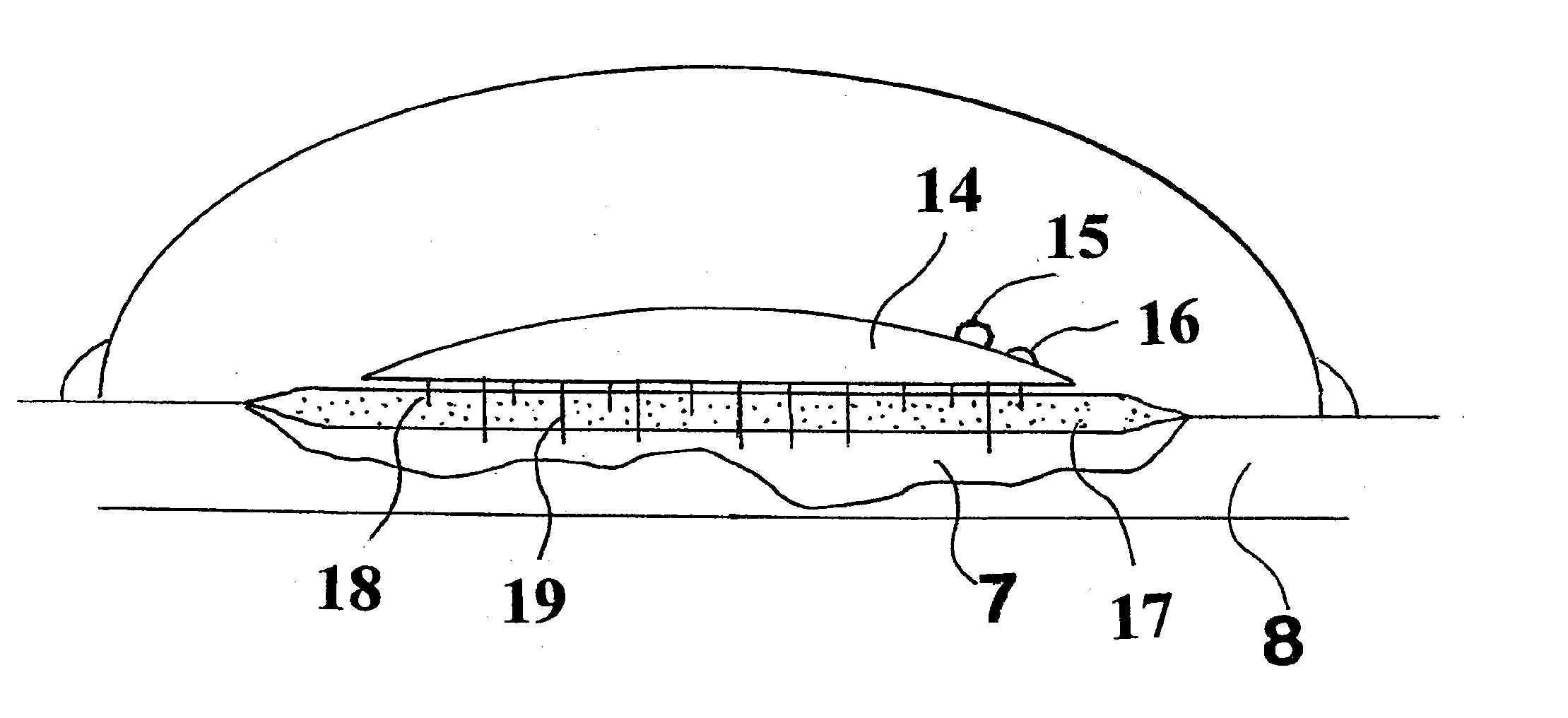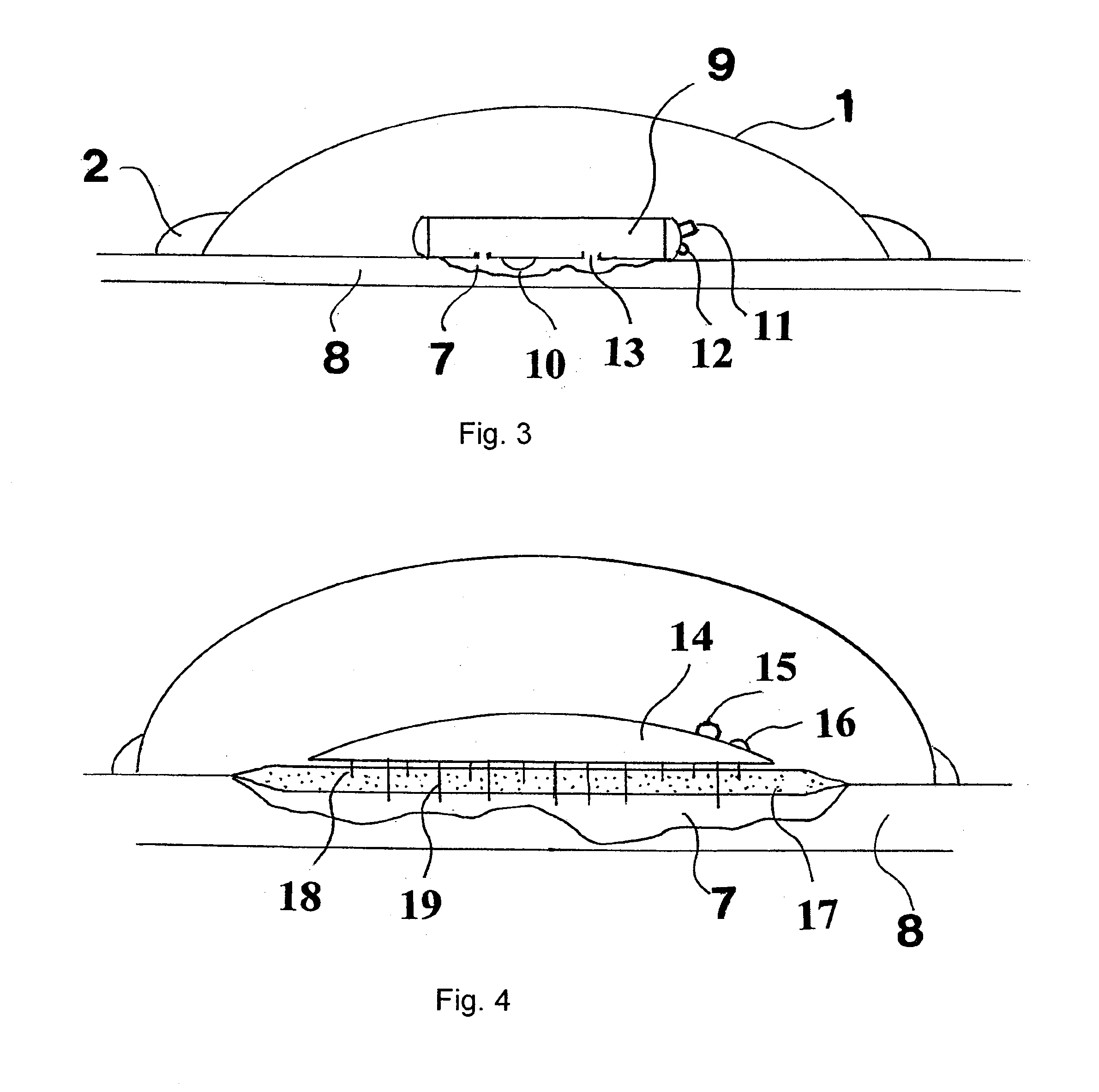Method and apparatus for the deactivation of bacterial and fungal toxins in wounds, and for the disruption of wound biofilms
a technology for destroying bacteria and fungal toxins, applied in applications, diagnostics, diagnostic recording/measuring, etc., can solve the problems of fresh wounds, remarkably prone to invasion, and continual treatment obstacles
- Summary
- Abstract
- Description
- Claims
- Application Information
AI Technical Summary
Benefits of technology
Problems solved by technology
Method used
Image
Examples
first embodiment
[0154
[0155]FIG. 1 shows a lateral, partially schematic view of a treatment chamber (1) according to an embodiment, having a malleable rim (2) which is capable of conforming to the outside shape of the wound (7). The inferior rim of the bubble is provided with an adhesive (20), for securing a hermetic seal with the skin (8) surrounding the wound (7). Ozone / oxygen from an ozone generator (not shown) enters through an entry port (3). Gas exits via an exit port (4) to enter an ozone destructor (not shown). Also shown are a toxin sensor gas port (5) and a biofilm destructor gas port (6).
[0156]FIG. 2 is a top view of the apparatus of FIG. 1. It shows the treatment bubble (1) conforming to the wound (7) outline.
[0157]FIG. 3 shows a toxin deactivation unit (9), apposed to the wound (7) surface. Ozone / oxygen enters via the entry port (11). Ozone is provided to the wound via ozone outlets (13). An ozone sensor (10) relays ozone concentration to a microprocessor (not shown). Also shown is an o...
second embodiment
[0159
[0160]FIG. 5 shows schematically the configuration of apparatus according to another embodiment, and its use for the external O3 / O2 treatment of an infected leg.
[0161]For additional description of this embodiment, including technical and medical background material, see Ser. No. 11 / 110,066 filed Apr. 20, 2005, incorporated by reference in its entirety.
[0162]The medical grade oxygen tank (1) feeds oxygen through a regulator (2) and enters the ozone generator (7) through an intake valve (3).
[0163]A power unit (4) imparts electrical energy for converting the oxygen to ozone.
[0164]The O2 / O3 mixture passes through a humidifier (5), then through a heater / cooler (6), exiting from the generator outflow valve (8) to enter the inlet (9) of the treatment envelope (11). An intake fan distributor (10) serves to homogenize the intra-envelope gas milieu.
[0165]The treatment envelope (11) encases the affected limb (12). Supporting ribs (13) hold the treatment envelope in a manner to prevent the...
PUM
 Login to View More
Login to View More Abstract
Description
Claims
Application Information
 Login to View More
Login to View More - R&D
- Intellectual Property
- Life Sciences
- Materials
- Tech Scout
- Unparalleled Data Quality
- Higher Quality Content
- 60% Fewer Hallucinations
Browse by: Latest US Patents, China's latest patents, Technical Efficacy Thesaurus, Application Domain, Technology Topic, Popular Technical Reports.
© 2025 PatSnap. All rights reserved.Legal|Privacy policy|Modern Slavery Act Transparency Statement|Sitemap|About US| Contact US: help@patsnap.com



